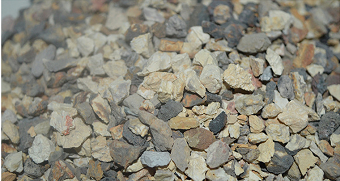Raw material for fire brickbinding agent
Apr 28, 2022
1. Raw material for fire brickbinding agent
The manufacture of high-alumina bricks usually uses soft clay as a binder. The main function of clay in the batching is to improve the molding properties of the clay and make the green body after molding and drying have a certain strength. However, during the sintering process, the free SiO2 in the clay and the free A12O3 in the high alumina bauxite clinker undergo a secondary mulliteization reaction, which intensifies with the increase of the amount of bound clay added. The stronger the secondary mullite reaction, the higher the porosity of high alumina bricks after firing, and the greater the possibility of decreasing strength and bulk density. From this point on, the amount of bound clay added to the ingredients should be minimized. The amount of clay powder added to the ingredients is generally 5%.

2. Determination of particle composition
The particle composition of high-alumina bauxite clinker has an important influence on forming operation, green body density, high-alumina brick density, and strength. Therefore, determining a reasonable particle composition according to different molding methods is an important process factor to stabilize the process operation and improve the quality of high-alumina bricks.
The principle of determining particle gradation is to form a good bulk density, which has no adverse effect on the performance and appearance quality of high-alumina bricks. Production practice shows that when determining the particle size, appropriately increasing the size and number of coarse particles can improve the bulk density of the mud, and it is easy to form. During sintering, due to the small specific surface area of the large particles, the secondary mullite reaction around the material is weakened, which is beneficial to the sintering of the green body. In turn, the gas entrapment rate of high alumina bricks is reduced, the softening temperature and compressive strength under load are increased, and the thermal stability performance is improved.
Relevant information
-

Main properties of magnesium oxide refractory
Performance characteristics of magnesia refractories and other basic refractories Performance characteristics of magnesia refractories and other basic refractories Refractories containing more than 80% ... -

What properties of lightweight insulation fire clay bricks can be improved by the addition of kyanite?
Lightweight insulation fire clay bricks are a kind of shaped refractory material with clay as the main raw material, which is processed, shaped, dried, and calcined with clay. on the kiln. Due to the r ... -

How is the effect of white fused alumina abrasive used in refractory materials?
After mixing, forming, drying, and firing at high temperature in a shuttle kiln. The product has the characteristics of high refractoriness, good thermal shock stability of white corundum, high high te ... -

Characteristics of refractory magnesia chrome bricks for lime kiln
Lime kilns are mainly classified into square kilns and circular kilns. According to the classification of fired products, they can be divided into lime kilns, ceramic kilns, cement kilns, glass kilns, ...

